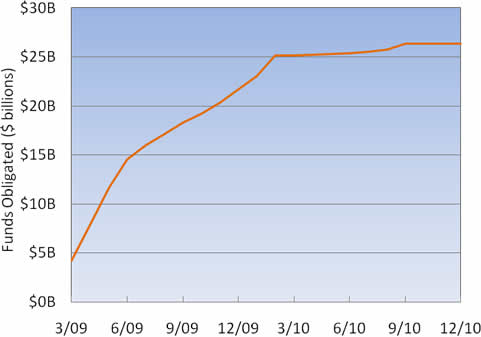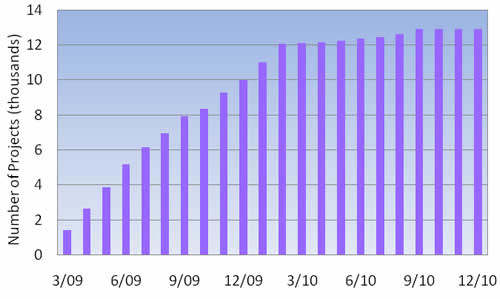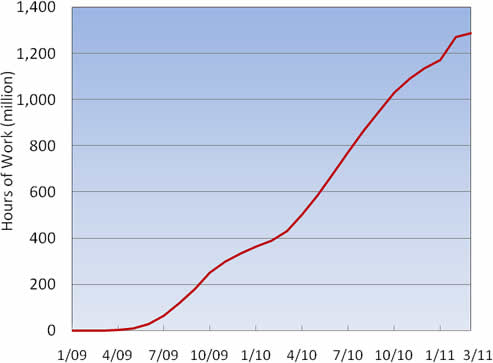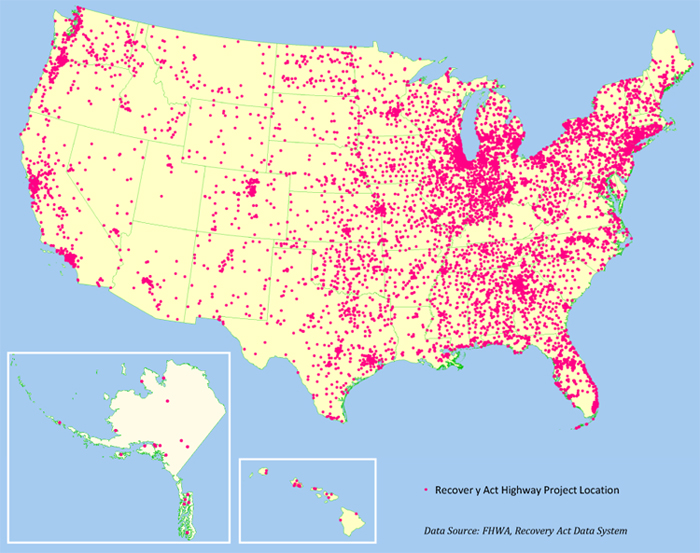U.S. Department of Transportation
Federal Highway Administration
1200 New Jersey Avenue, SE
Washington, DC 20590
202-366-4000
On February 17, 2009, President Obama signed into law the American Recovery and Reinvestment Act of 2009 (Recovery Act), whose main goals are to create new jobs, maintain existing employment, spur economic activity, invest in long-term economic growth, and to foster unprecedented accountability and transparency in government spending.
Figure A-1: Funds Obligated by State Agencies

The passage of the Recovery Act brings a renewed focus on the importance of infrastructure throughout the United States. In addition to physical improvements to the national roadway system, the Recovery Act also increases awareness of the need for preserving and improving our highway infrastructure.
As of December 2010 a total of $26.3 billion in Recovery Act funds have been obligated by states for highway-related projects. Currently, 96 percent of highway and bridge Recovery Act funds have been obligated by State, local, and tribal governmental agencies.
Figure A-2: Total Number of Highway Projects Funded

Data Source: FHWA, Recovery Act Data System
A total of 12,931 highway projects have been fully or partially funded by the Recovery Act as of December 2010, an increase of 2,926 projects since December 2009. An average of 588 Recovery Act projects have been funded each month in the 22 months since its beginning. In 2010 an average of 244 Recovery Act projects were funded each month.
Figure A-3: Cumulative Hours of Work on Highway Projects Funded by the Recovery Act

Data Source: FHWA, Recovery Act Data System
The Recovery Act helps economic recovery by creating employment opportunities for people across the country. One of the direct measurements is of the hours worked on various roadway, bridges, and tunnel projects to improve safety, increase capacity, reduce congestion, and promote livability. As of March 2011 approximately 1.3 billion cumulative hours of work were funded directly by the Recovery Act, the equivalent of about 290,000 full-time jobs of 2 years.
Figure A-4: Types of Recovery Act Highway Projects

Data Source: FHWA, Recovery Act Data System
There are a wide range of FHWA-administered projects funded under the Recovery Act. These projects include pavement improvement (49 percent of Recovery Act projects), pavement widening (17 percent), new construction (7 percent), safety and traffic management (5 percent), bridge replacement (5 percent), and other projects, such as bike paths.
Figure A-5: Map of Recovery Act Highway Project Locations

This map illustrates the locations of the Recovery Act projects throughout the country.
| << Prev | Contents | Next >> |